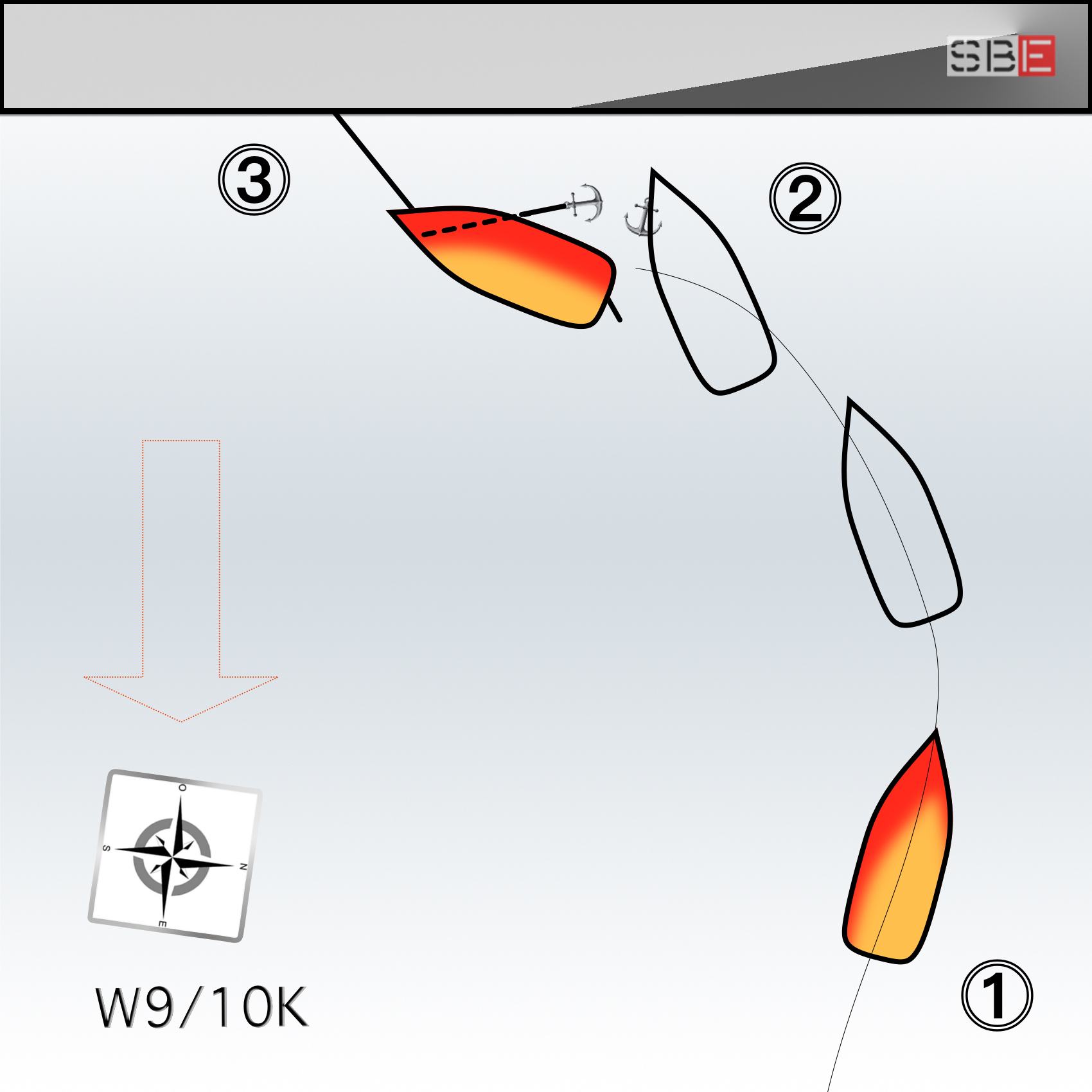Manoeuvre 3; Mooring with Wind and Leeward Anchor
Although, due to the rapid spread of bow thrusters and special rudders, the use of the anchor is now rare. Knowing some manoeuvres that involve their use, even if only theoretically, is part of the baggage of every good ship-handler.
We have chosen to describe an atypical manoeuvre, which involves using the leeward anchor, not the windward one, as is commonly used.
In this example, we consider a traditional ship:
- 100 meters long,
- single prop right-handed fixed pitch, &
- without a bow thruster.
The wind blows offshore. Final mooring starboard side alongside.

Using the leeward anchor is not intuitive, but it serves to grab the anchor better using little weight. The anchor line passing under the hull and working more longitudinally will keep the ship almost parallel to the quay and permit us to send the stern mooring lines ashore more easily.
Once the ship has approached the quay, we drop the port anchor. The quantity of chain will be that given by the depth plus a maximum of one scope at sea to maintain the steering with the engine slow ahead and a speed of 2-3 knots necessary for the approach.
The leeway of the ship due to the shore wind will make the anchor look windward, keeping the bow in the desired direction. Using the engine and rudder to port, we will support the stern in the wind while dredging the anchor. We will approach the quay where we will give the mooring lines.
Once the bow has secured to the quay and at least one stern line ashore, we could haul up the anchor and finish the mooring.
